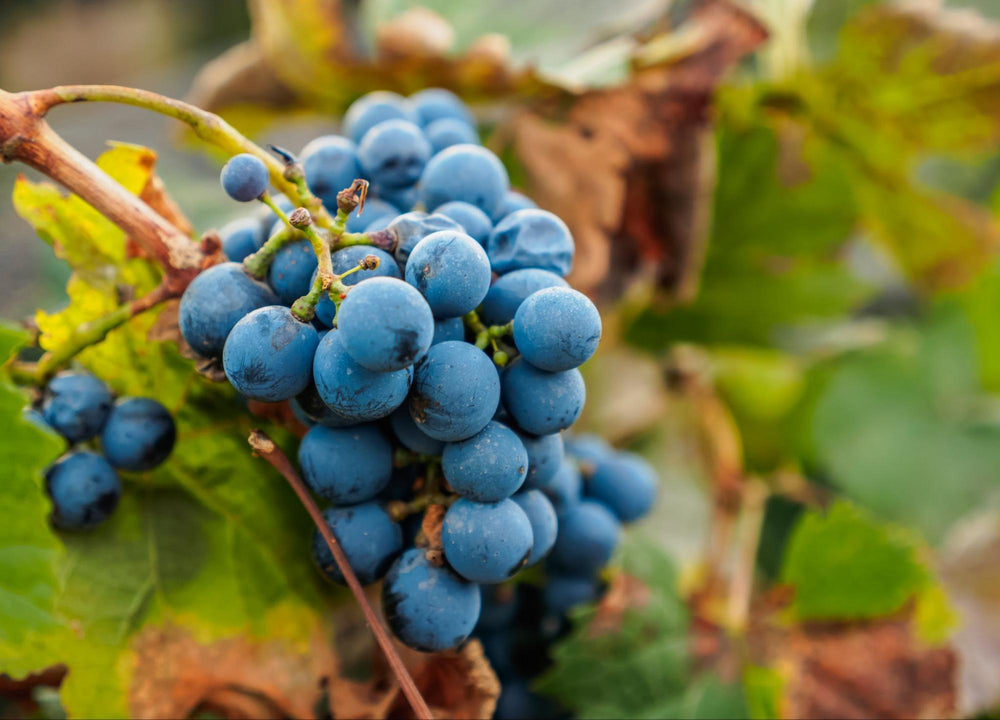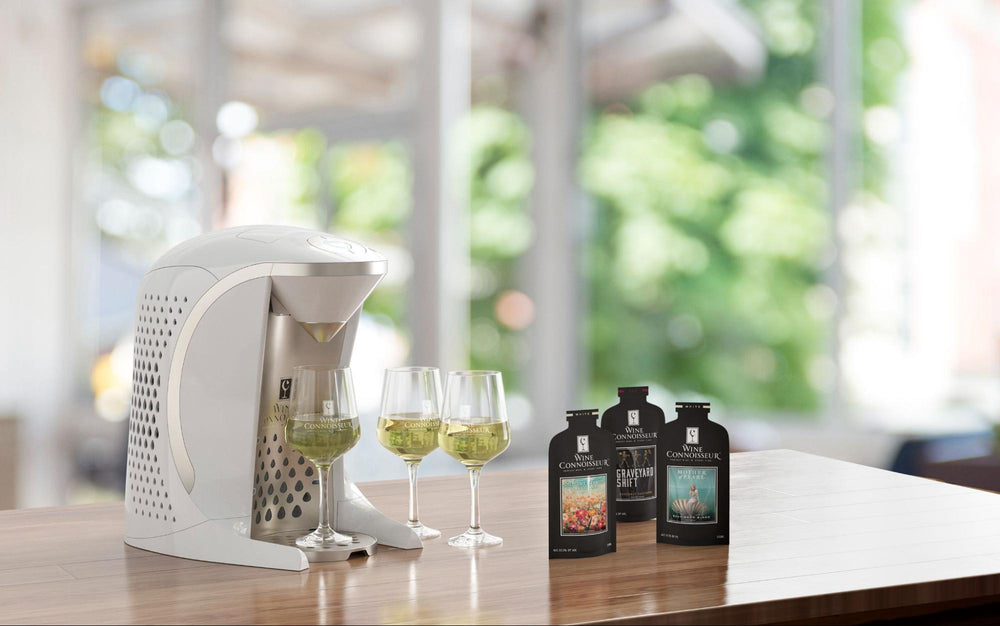Cheat Sheet to Serving Wine

Few other foods or drinks in the world have as rich a history as wine. Wine has grown through centuries of tradition, hundreds of cultures and regions, and continues to evolve today. While that brings a level of prestige to the drink itself, it also brings hundreds of years worth of etiquette and rules!
At a casual kick back with one or two close friends, the “formality” of wine might not be an issue; after all, who are you trying to impress? However, the next time you’re planning on throwing a big dinner party, and you want to show off some wine to your guests, it might be worth learning some of the basics of wine serving!
If this is your first introduction to wine serving, then we’ll warn you now, there are lots of different variables that come into play. There are some crucial things to pay attention to, as different glass types, wine temperatures, and portion sizes can all affect the flavor and aroma of the drink. There are also some less important parts of wine serving, such as the order wine is presented in, how the wine is prepared before serving, and specific ways to pour the wine. Thankfully, you won’t need to learn all of them, as many of the more specific “rules” are simply guidelines meant to apply only to 5-star restaurants and luxury resorts.
We’ll make sure we go through the essentials without boring you too much by getting stuck on the fancier side of tradition. You don’t need to be a trained sommelier to serve your wine, but it doesn’t hurt to know a few tricks to impress the people around you! For future reference, or just for kicks, here’s your Wine Serving Cheat Sheet!
The Big Three
You may have heard the phrase “comedy comes in threes,” which refers to the idea that three is the best number of items or characters to include in a joke or story. While this tends to hold true for comedy and writing, it also applies to several different aspects of life, including wine serving!
Naturally, there are plenty of nuances in this rule, and if you’re trying to serve wine as perfectly as possible, you’ll need to remember more than three things. However, for this article, three is the ideal number of factors to consider! As long as you can ensure all three elements are taken care of, you’ll have no difficulty serving your wine.

Wine Temperature
First and foremost, we have the serving temperature of various wine varietals. Wine is one of a few beverages globally with different serving temperatures depending on the drink, so this is arguably the most crucial factor to consider! By adjusting the temperature of your wine, you maximize the positive aspects of the drink and minimize the potential flaws.
Wine serving temperature can change the aroma and acidity of the wine and how prominent the tannins and alcohol are in the drink. Warmer wines will have more robust aromas and impressions of alcohol, while colder wines emphasize acidity and tannins! Though some wines will have precise temperatures, you can generally organize them by wine type.
- Reds — 60º - 65º
- Red wines are generally bolder than most other wines, so room temperature (or close to it) works well to bring out the best of the wine.
- Whites — 45º - 55º
- If you’re dealing with a lighter white wine, you should stay near the lower end of the temperature range (around 45º-50º), while full-bodied white wines will be best closer to 50º.
- Rosés — 48º - 53º
- Rosés are a good middle point between the lighter and heavier white wine varietals. Similar to white wine, the lighter the rosé, the colder it should be in that range.
- Sparkling Wine — 40º - 45º
- Champagne bubbles love the cold, so to keep your “bubbly” nice and crisp, chill it more than you would most wine.
- Fortified Wine — 55º - 60º
- For rich, fortified wine, like port or sherry, you’ll want it closer to room temperature, though still slightly chilled.
When you can serve wine at the ideal temperature, you’re doing yourself and all of your guests a favor!
Glassware
There are margarita glasses, rocks glasses, shot glasses, and more, but when it comes to wine, there’s no “one-size-fits-all” glassware! Of course, you can pour your wine into whatever vessel you wish; it’s still your personal preference. That being said, the specific shape, circumference, and depth of glass can change how a wine smells and tastes, so to get the most from your vino, investing in the proper glassware can go a long way.
Glassware is certainly less crucial than serving temperature, but even the smallest of details can end up making a massive difference in the result. Getting the correct glassware is an excellent touch that more experienced wine lovers will appreciate!
- For Full-Bodied Wine — Your “average” wine glass is probably a red wine glass with a deep round bowl. As the nickname suggests, this glass style is best for red and other full-bodied wines, as the wide bottom allows more of the wine’s aroma to shine.
- For Light-Bodied Wine — Unlike the full-body wines, you’ll want a somewhat thinner glass for your dry and sweet varietals.
- For Sparkling Wine — For sparkling wine, you want a glass that will show off the carbonation, so no wonder the champagne flute is such a popular choice for these wines!
When pouring the wine, pour only until the widest part of the glass. This helps to measure out the wine serving size! Most wine glasses will hold either 16 ounces or 12 ounces, though a typical serving is six ounces of wine.
To Breathe or Not To Breathe?
If you’ve already accounted for the glassware and temperature of your wine, then you’re pretty much ready to serve your wine. There’s just one final step that you should pay attention to, and it only applies to certain wines; aeration.
You may or may not know this, but a chemical reaction starts the second you crack open a bottle of wine. Like apples and avocados that have been left out, all wine goes through a process called oxidation, which heavily impacts the flavor and aroma of the drink. Throughout the creation process of the wine, the grapes go through varying stages of oxidation and evaporation, all of which help create the unique flavors in the wine.
However, some wine can go through an additional phase of oxidation, more commonly referred to as “aerating” the wine or “letting the wine breathe.” You can accomplish this by letting the open bottle sit for about 30 minutes or by using a wine aerator pourer, a device that moves air through the wine as you pour!
Aeration certainly doesn’t apply to all wines, but with the right grapes and vintage, aerating wine can open up a new range of flavors and richness! Just be positive that the wine requires aeration; otherwise, you may ruin a bottle of excellent vino.
Generally, young red wines or wines rich in tannins benefit the most from aeration, as the aeration “softens” the tannins, making your wine even smoother than before. If you are unsure whether your wine needs to breathe or not, you can usually find that information on the label or online!
Serve Right with Wine Connoisseur
Of course, if you want to avoid all of these rules and traditions, you could let us take care of it for you! With our Wine Connoisseur, you can pour the perfect glass of wine every single time. Our single-serve wine dispenser automatically adjusts for temperature and aeration, making your wine tasting experience seamless and stress-free!



